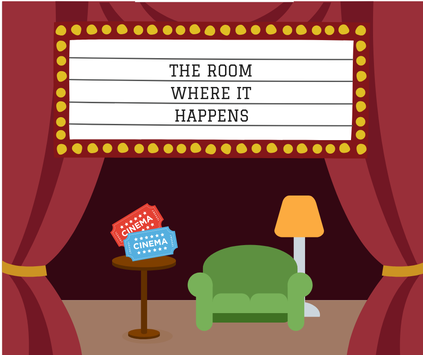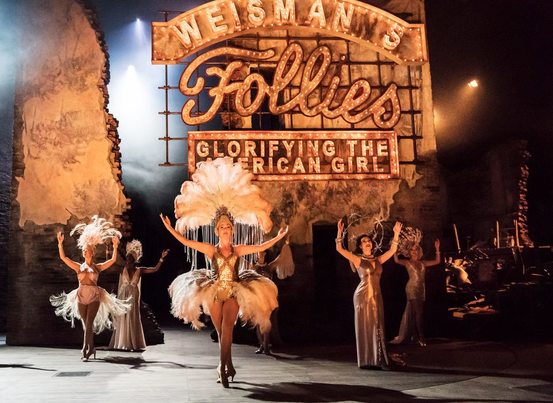|
“I'm sorry theater only exists in one place at a time but that is also its magic.” Lin-Manuel Miranda There is a widespread belief that watching theatre on screen means you’re no longer experiencing “theatre.” While I would agree that the phenomenon of theatre on screen needs a new name, there is a small but growing body of research to show that watching filmed live theatre is just as exciting a way of experiencing theatre as being in the room where it happens. Given that the vast majority of filmed live theatre is coming from the United Kingdom, it should come as no surprise that the research is also being conducted there. Arts Council England, the Society of London Theatres (SOLT), UK Theatre, and, the National Endowment for Science, Technology and the Arts (NESTA), have all released reports investigating audiences’ responses to watching live theatre on screen. A finding across across all the reports is that watching theatre on screen is not a replacement for live theatre, but an alternative way to consume it. In writing about enjoying opera on the cinema screen, British commentator Clemency Burton-Hill wrote while there is nothing like sitting in the plush red velvet of the Royal Opera House stalls, waiting in anticipation for that legendary red-and-gilt curtain to rise, watching it in the cinema is an exhilarating alternative when I can’t be there in person." The research also shows that audiences can have strong emotional reactions to live theatre on screen. During real-time live broadcasts, audiences have reported feeling a part of the live experience, despite not being physically in the theatre. Shakespeare scholar Erin Sullivan reiterates this in the newly published Shakespeare and the ‘Live’ Theatre Broadcast Experience, adding that audiences do not even need to be viewing a broadcast in real time in order to be moved by theatre on screen. Watching a live performance on screen, even years after the performance has taken place can still generate an emotional response. Sullivan also discusses how social media has allowed audiences to engage with content in a new way, making “spectatorship visible in a way that has not been previously possible.” The internet is not only creating new ways of interacting with theatre, recent reports suggest that streamed theatre attracts a younger, and a more culturally, and economically, diverse audience. As columnist Christopher Zara has noted, “streaming media [makes] Broadway more accessible,… ultimately preserving it for the next generation.” And what about the room where it happens? Is theatre on screen negatively affecting ticket sales in the theatre? The Audience Agency, a British charity aiming to help arts organizations use national data to understand audiences, recently found that there was “a small net increase in arts attendance in areas where there had been a screening.” In an earlier blog post, I took a look at how Broadway ticket sales are affected by filmed live theatre and found that ticket sales were not negatively affected. In an article comparing the experience of watching Kenneth Brannaugh’s Romeo and Juliet on stage and screen, British theatre critic Peter Bradshaw noted “People watching a football match on TV as opposed to in the stadium can still have a great time – without worrying that it’s inauthentic, or that they have somehow made a wrong or disloyal choice.” While academics Bernadette Cochrane and Francer Bonner believe comparing live theatre to live sport on screen will reduce the “cultural capital” of theatre, the research is showing that live theatre on screen is a viable alternative to being in the room where it happens. The magic of technology means we can experience theatre magic in a room thousands of miles from where the action is taking place. Will you be in the next room? Sources Articles
Filmed Live Musicals is a labor of love that takes many hours of research and hundreds of dollars to run.
Thank you to Star patrons Mercedes Esteban-Lyons, Jesse Rabinowitz and Brenda Goodman, and David and Katherine Rabinowitz for financially supporting the site. Become a patron today and support original research into filmed live musicals. For just $1 a month, you will receive a monthly newsletter with bonus content not available on the site. $5+ patrons also receive filmed live musical reviews.
0 Comments
In my post on bootlegs a few weeks ago, I mentioned the National Theatre’s success in broadcasting theatre around the world through its program National Theatre Live (NT Live). This week, we're taking a closer look at the program.
NT Live began as an experiment to see how digital technology could allow a wider audience to enjoy National Theatre productions. The first broadcast took place in June 2009 with the live cinema screening of Phèdra starring Helen Mirren. Over 60 productions later, NT Live has been broadcast on 2500 screens in 60 countries around the world, and viewed by over 5.5 million people. To date, NT Live has broadcast three musicals, FELA! (2011), The Threepenny Opera (2016), and Follies (2017). The vast majority of broadcasts are from within the National Theatre in London, however beginning in 2013, NT Live has also broadcast select productions from the West End, including The Audience (coincidentally also starring Helen Mirren) and War Horse. In 2015, NT Live broadcast Of Mice and Men from the Longacre Theatre on Broadway. Camera plots are specifically designed for each show, allowing the theatre and film director to ensure the most effective capture. Cameras are often placed right in the audience, and audience members are able to purchase tickets for filmed performances at a discounted rate. Adjustments to various elements of each production are also made, including lighting and sound design, and wig and costume design. If adjustments are being made to the production for the capture, is the film still a capture of a theatre production? In the 2009 National Theatre annual report, artistic director Nicholas Hytner noted, “…I am confident that we have pioneered a new genre: not quite live theatre, certainly not cinema, but an exciting approximation of the real thing whose potential reach is limitless.” NT Live screenings are advertised as special events — a limited time chance to see a live capture of a National Theatre production. Cinemas located in the same timezone as London receive broadcasts in real time, while cinemas outside the timezone receive the same capture at a later time and/or date. Due to popular demand, “encore screenings” are also scheduled. While some broadcasts are also available to schools for streaming in the UK through its On Demand program, most productions are not available to view or purchase after the cinema broadcasts. This is due to licensing, and contract negotiations. At the time of its launch, NT Live was the only program for broadcasting live theatre in cinemas. As such, there has been significant research into its impact. In various reports, UK organization Nesta has found the following:
Nearly ten years after its launch, NT Live provides a great model for how filmed live theatre can co-exist with, and provide a new experience of, live theatre. |
Archives
June 2024
Categories
All
|



 RSS Feed
RSS Feed